Although they cover over 70% of our planet, only 0.6% of the world oceans are protected. It is estimated that we only know about 1 in 10 species in the ocean, which is unsurprising given that 90% of the ocean is more than half a mile deep and still remains largely unexplored. How might technology help us discover, understand and protect the vulnerable ecosystems below the waterline?
Marine Conservation is a fast-growing group in the WILDLABS community, capturing a wide variety of tech expertise within its member base, including those working with bioacoustic gear and hydrophones, AUVs and drones, sensors, machine learning, and more. By bringing together WILDLABS members from so many areas of conservation tech, the Marine Conservation group is the perfect place to collaborate on big, complex issues like marine biodiversity monitoring, coral reef health, plastic pollution, and sustainability.
The Marine Conservation group forum is also your place to chat about and solve the challenges unique to using conservation technology in marine environments. Whether you're struggling with deep-sea connectivity or salt water impacting gear longevity, or looking for remote solutions for long-term reef monitoring or biologging data collection, this group wants to help you explore the possibilities!
Check out some of the key marine conservation tech resources, conversations, and virtual events from across the WILDLABS platform:
Tutorials and Talks to Watch on Demand:
- Virtual Meetups: Developing cost-effective, open-source marine megafauna tracking, Jake Levenson
- Tech Tutors: How do I use open source remote sensing data to monitor fishing?, Max Schofield
- Virtual Meetups: eDNA for Aquatic Biodiversity, Alice Valentini
Case Studies, Tools, Research, and News:
- Southern Right Whales & Genome and Satellite Technology, Emma Carroll | eDNA & genomics, satellite data, biodiversity monitoring, climate change
- Building Experts Into AI, Whale Seeker | Machine learning, marine conservation, AI ethics
- Using AIS Data to Investigate the World’s Fishing Ports, Max Schofield | Remote sensing, data visualisation, fishing monitoring
- Small-scale fisheries and tech resources, Dan Steadman | Fishery monitoring, webinars, best practices
- Press Release: BAS Giant Iceberg Mission, British Antarctic Survey | Climate change, AUVs, remote sensing
- Case Study: Thermal imaging, drones, and loggerhead sea turtles, Megan Ossmann | FLIR, Duo Pro R camera, drones
- eDNA sampling to detect invasive snails in shipping ballast water, Gavin Shelton | Invasive species, eDNA, shipping
- Sustainable Fishing Challenges: Fish Catch Monitoring, Dan Steadman | Biologging, sensors, fishing monitoring
Conversations and Questions:
- Satellite tags for marine turtle recommendations | Alasdair Davies
- Calling all hydrophone users! | Team Open Acoustic Devices
- How difficult is it to build a buoy and constrain it in place? | Lindy Knowles
- Methods to detect Derelict Fishing Gear | Nandini Mehrotra
- Drone Mapping for Algal Blooms? | Harold Tay
- Minimising habitat impact of trawling gear | Dan Steadman
- Estimating carbon from 3d models of mangroves | Mark Brown
- Can we detect gillnets in turbid water? | Aurélie Shapiro
- New low cost DIY temperature loggers for reef monitoring | Harold Tay
- Machine learning to detect fish bomb blasts | Jamie Macaulay
Header Image: Emma Vogel
WILDLABS & Wildlife Conservation Society (WCS)
I hold a PhD in Biological Sciences and specialize in bioacoustics and passive acoustic monitoring of cetaceans in the Argentine Sea and Antarctica. Recently, I've also embraced computing to leverage technology in enhancing our conservation efforts.

- 0 Resources
- 0 Discussions
- 14 Groups


- 1 Resources
- 6 Discussions
- 3 Groups
Fauna & Flora
- 0 Resources
- 0 Discussions
- 3 Groups
FileMaker developer with a passion for nature.





- 1 Resources
- 71 Discussions
- 7 Groups
- @carlybatist
- | she/her
Science Outreach Lead-Rainforest Connection (RFCx) & ArbimonEcoacoustics, biodiversity monitoring, primates, lemurs



- 69 Resources
- 284 Discussions
- 18 Groups
- @alexrood
- | she/her
WILDLABS & World Wide Fund for Nature/ World Wildlife Fund (WWF)
I'm the WILDLABS Communications and Community Management Associate Specialist at WWF-US





- 28 Resources
- 15 Discussions
- 8 Groups
- @CourtneyShuert
- | she/her
I am a behavioural ecologist and eco-physiologist interested in individual differences in marine mammals and other predators
- 0 Resources
- 5 Discussions
- 4 Groups
Technical Specialist at FFI: loves data management, maps, remote sensing & GIS for conservation

- 0 Resources
- 2 Discussions
- 9 Groups
- @rowan
- | they / them
Octophin Digital
Jack of all Trades. I've been a zoo keeper, a conservation geneticist and a web developer who specialises in conservation projects and orgs.
- 0 Resources
- 3 Discussions
- 15 Groups
- @tobiaspetri
- | him/his
Schäuffelhut Berger GmbH
data scientist/algorithmic dev - caught fire for movement ecology



- 5 Resources
- 14 Discussions
- 8 Groups
- 0 Resources
- 0 Discussions
- 5 Groups
Worked as a mechanical engineer for a defence co, then software engineer, then for a research lab specialising in underwater robotics.

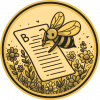

- 1 Resources
- 135 Discussions
- 16 Groups
Article
Read in detail about how to use The Inventory, our new living directory of conservation technology tools, organisations, and R&D projects.
1 May 2024
Article
The Inventory is your one-stop shop for conservation technology tools, organisations, and R&D projects. Start contributing to it now!
1 May 2024
ZSL is looking for an enthusiastic research scientist to join the multidisciplinary team and help deliver a project in Wales to better understand the ecology of tope sharks (Galeus galeus) in North Cardigan Bay and the...
9 April 2024
WWF is looking for consultant(s) with expertise in spatial data mapping and analysis.
19 March 2024
Hussey Labs seeks a senior post-doctoral researcher/senior research associate for movement ecology of Greenland halibut in the context of fisheries management across Baffin Bay-Davis Strait, Eastern Canadian Arctic.
13 March 2024
Whether you’re an aspiring or established entrepreneur, an early-stage startup, or a researcher, apply to the Project 71 – A Venture Competition for Ocean Regeneration. This competition is for you if you have a bold...
4 March 2024
Join the mission to help tackle IUU fishing with cutting-edge tech! The Allan Institute for AI is seeking a Senior Software Engineer to accelerate efforts to make sure those working to restore our ocean have the tools...
21 February 2024
SEE Shell is an innovative phone app that uses machine learning to identify products made from the shell of the critically endangered hawksbill sea turtle.
14 December 2023
Using baited remote underwater videos (BRUVs) to survey seagrass habitats along Kenya’s North Coast
30 November 2023
The Department of Applied Ocean Physics and Engineering (AOPE) at the Woods Hole Oceanographic Institution (WHOI) seek to hire 1-2 scientists at any of the Assistant/Associate/Senior Scientist levels to develop research...
27 November 2023
TagRanger® is a state-of-the-art wildlife finding, monitoring and tracking solution for research, conservation and environmental professionals. With superior configurability for logging data, reporting location and...
23 November 2023
Prospective PhD students with a background in acoustics and an interest in Arctic ecology are encouraged to email Michelle EH Fournet
16 November 2023
May 2024
June 2024
October 2024
April 2024
event
| Description | Activity | Replies | Groups | Updated |
|---|---|---|---|---|
| Thanks, Thomas! I will definitely look into this more. I like the idea of finding ways to adjust the base plate/attachment point to something more biodegradable/sustainable, so... |
|
Biologging, Marine Conservation | 5 days 22 hours ago | |
| Congrats @MattyD797 and team!!! We do a lot of work in the underwater bioacoustic realm and your tool certainly seems like it would be a great instrumental addition to the... |
|
Acoustics, Build Your Own Data Logger Community, Marine Conservation, Protected Area Management Tools, Sustainable Fishing Challenges | 3 weeks 2 days ago | |
| We could always use more contributors in open source projects. In most open source companies Red Hat, Anaconda, Red Hat and Mozilla, people often ended up getting hired largely... |
|
Acoustics, AI for Conservation, Conservation Tech Training and Education, Early Career, Marine Conservation | 1 month 1 week ago | |
| Hello everyone, I'm interested in gathering insights on how the behavior of different species impacts the development and efficacy of... |
|
Biologging, Acoustics, Camera Traps, eDNA & Genomics, Emerging Tech, Marine Conservation | 1 month 1 week ago | |
| Hi all, I am searching for marine species projects that monitor orientation/IMU and/or acceleration data... |
|
Biologging, Marine Conservation | 1 month 2 weeks ago | |
| Hi Scott, thanks so much for sharing your thoughts here! It would be great to learn more about this, would you be interested in finding a time to chat? Thanks! |
|
Marine Conservation, Sustainable Fishing Challenges, Wildlife Crime | 2 months ago | |
| Ah yes. I didn’t notice that. Indeed it’s “near infrared”, 850nm lighting. |
|
Camera Traps, Marine Conservation | 2 months ago | |
| Am working on similar AI challenge at the moment. Hoping to translate my workflow to wolves in future if needed. We all are little overstretched but it there is no pressing... |
|
Camera Traps, AI for Conservation, Build Your Own Data Logger Community, Data management and processing tools, Marine Conservation, Protected Area Management Tools, Remote Sensing & GIS | 3 months ago | |
| I dont have anything written up but I can tell what parts we used and how we tested.Its pretty straightforward, we used this M10 Enclosure Vent from Blue Robotics: Along with... |
|
Build Your Own Data Logger Community, Acoustics, Camera Traps, Climate Change, East Africa Community, Marine Conservation, Open Source Solutions, Protected Area Management Tools | 3 months 2 weeks ago | |
| Thanks Aude, very useful. Will reach out to them! |
|
Early Career, Acoustics, eDNA & Genomics, Marine Conservation, Protected Area Management Tools | 3 months 3 weeks ago | |
| Thank you for sharing! Super interesting, as we don't see many underwater stereo cameras! We also use Blue Robotics components in our projects and have found them reliable and... |
|
Sensors, Camera Traps, Marine Conservation | 4 months ago | |
| If you are considering an external microphone and a towed system, then you would also be in a position to consider a raspberry pi with an external microphone with sbts-aru.... |
|
Acoustics, AI for Conservation, Marine Conservation, Sustainable Fishing Challenges | 4 months 1 week ago |
The Inventory User Guide
1 May 2024 12:46pm
Introducing The Inventory!
1 May 2024 12:46pm
Fully-retrievable Satellite Tags for Seals?
10 April 2024 4:49pm
25 April 2024 3:16pm
Thanks, Kyler. This is a great place to start - thanks for sharing the link!
25 April 2024 3:20pm
Thanks, Thomas! I will definitely look into this more. I like the idea of finding ways to adjust the base plate/attachment point to something more biodegradable/sustainable, so this could be a good middle ground.
Have you had any experience with more 'sustainable' materials for tag attachments?
Post Doctoral Research Assistant at ZSL
9 April 2024 7:03pm
The IUCN-SSC Crocodile Specialist Group (CSG) Conference
9 April 2024 8:21am
WILDLABS AWARDS 2024 - FinDrop: Accessible Acoustic Monitoring for Mesophotic Marine Environments
5 April 2024 10:22pm
7 April 2024 6:07pm
Congrats @MattyD797 and team!!! We do a lot of work in the underwater bioacoustic realm and your tool certainly seems like it would be a great instrumental addition to the community. Look forward to learning more about your project!
Liz
Not so silent spectators: How spectator vessels at international sailing regattas alter marine soundscapes
3 April 2024 4:50pm
Check out how water-based sporting events are impacting underwater noise pollution for marine life.
Rescuers hope AI will help reunite orphaned whale with its family in B.C.
3 April 2024 4:43pm
Finwave, while currently in beta-testing, is being used to help reunite an orphaned whale with its family.
Seventh International Conference on the Effects of Noise on Aquatic Life
3 April 2024 4:34pm
AI for Conservation!
4 March 2024 8:51pm
22 March 2024 12:29pm
Welcome, Have you considered participating in any of the AI for Good challenges. I find it is good way to build a nice portfolio of work. Also contributing to existing open source ML projects such as megadetector or to upstream libraries such as PyTorch is good way to getting hired.
22 March 2024 5:57pm
Thank you for the tip! I'll definitely consider contributing to open source projects and taking part in challenges :)
25 March 2024 5:22am
We could always use more contributors in open source projects. In most open source companies Red Hat, Anaconda, Red Hat and Mozilla, people often ended up getting hired largely due to their contributions on open source projects. These contributions were both technical such as writing computer code and non-technical such as writing documentation and translating tools in their local language.
How does behavior influence the use of technology for animal detection ?
22 March 2024 7:49pm
Consultants - Mapping EU’s Marine Protected Areas and analyzing their ecological coherence
19 March 2024 9:39am
Using citizen science image analysis to measure seabird phenology
13 March 2024 9:32pm
Our new paper uses data from the citizen science project, Seabird Watch (hosted on the Zooniverse platform; seabirdwatch.org), to measure seabird phenology. Volunteers marked birds in time-lapse images to investigate arrival and departure to/from the breeding grounds.
Senior Post-doctoral Researcher/Senior Research Associate Opportunity: Movement ecology of Greenland halibut
13 March 2024 2:00pm
IMU and orientation data for marine species
13 March 2024 9:12am
Project71: A Venture Competition for Ocean Regeneration
4 March 2024 10:49am
Species ID Needs?
19 February 2024 7:55pm
23 February 2024 2:10pm
Hello Nadia,
A forensic genetic challenge exists when DNA is destroyed by processes used in manufacturing of derivative animal products, preventing law enforcement in identification of protected species. Alternative methods such as lipid profiles or isotope analysis unique to certain species may be possible but require voucher specimens that may or may not be available and methods that have not been tested or peer reviewed. Examples below:
- derivative products made from endangered shark squalene (eg. Liver oil capsules).
- derivative products made from lion bone and tiger bone (eg. lion bone cake and tiger wine).
This is a law enforcement issue and would like to discuss possible solutions.
1 March 2024 2:27am
Hi Scott, thanks so much for sharing your thoughts here! It would be great to learn more about this, would you be interested in finding a time to chat? Thanks!
Timelapse Infrared Camera Suggestions
14 February 2024 1:54am
24 February 2024 6:18am
I doubt there is an off the shelf solution. Likely you will have to build one. Again I think the FLIR leptons could be of value here.
@krasi_georgiev you have worked with Leptons before ? Is this something you are able to advise on ?
25 February 2024 1:11pm
Ah yes. I didn’t notice that. Indeed it’s “near infrared”, 850nm lighting.
Senior Software Engineer, Skylight
21 February 2024 3:44pm
Workshop: Advances in eDNA for monitoring and ecological studies of marine mammals
14 February 2024 7:25pm
Contrasting strengths of eDNA and electrofishing compared to historic records for assessing fish community diversity and composition
14 February 2024 7:24pm
This study investigated the accuracy of eDNA and electrofishing as alternative methods for assessing diversity.
eDNA Collaborative: Small Grants Application for Marine eDNA Research
12 February 2024 7:45pm
The eDNA Collaborative is partnering with Experiment to offer $80,000 in small grants to support projects that demonstrate novel approaches in marine eDNA collection, analysis, or application.
Submission Deadline: March 30, 2024
Bio-Logging Science Symposium
9 February 2024 3:59pm
Southern African Wildlife Management Association Conference 2024
6 February 2024 12:20pm
Project Planning for Wildlife Conservation
30 January 2024 3:13pm
Jupyter Notebook: Aquatic Computer Vision
25 January 2024 5:50am
26 January 2024 1:46pm
This is quite interesting. Would love to see if we could improve this code using custom models and alternative ways of processing the video stream.
27 January 2024 4:07am
This definitely seems like the community to do it. I was looking at the thread about wolf detection and it seems like people here are no strangers to image classification. A little overwhelming to be quite honest 😂
While it would be incredible to have a powerful model that was capable of auto-classifying everything right away and storing all the detected creatures & correlated sensor data straight into a database - I wonder if in remote cases where power (and therefore cpu bandwidth), data storage, and network connectivity is at a premium if it would be more valuable to just be able to highlight moments of interest for lab analysis later? OR if you do you have cellular connection, you could download just those moments of interest and not hours and hours of footage?
27 January 2024 6:11am
Am working on similar AI challenge at the moment. Hoping to translate my workflow to wolves in future if needed.
We all are little overstretched but it there is no pressing deadlines, it should be possible to explore building efficient model for object detection and looking at suitable hardware for running these model on the edge.
Recycled & DIY Remote Monitoring Buoy
15 January 2024 1:14am
15 January 2024 9:17pm
Hello fellow Brett. Cool project. You mentioned a waterseal testing process. Is there documentation on that?
18 January 2024 10:25am
I dont have anything written up but I can tell what parts we used and how we tested.
Its pretty straightforward, we used this M10 Enclosure Vent from Blue Robotics:
Along with this nipple adapter:
Then you can use any cheap hand held break pump to connect to your enclosure. You can pump a small vacuum in and make sure the pressure holds.
Here's a tutorial video from blue robotics:
Let me know if you have any questions or if I can help out.
Looking for a Supervisor/Research Group - ML-driven Marine Biomonitoring
3 January 2024 2:05pm
5 January 2024 11:07am
Hi Filippo,
Nice to read your message. Have you thought of contacting anyone in the Bioscience department at UCL? In our group "the People and Nature Lab", a few PhD students (Ben and Jason) are working on ML methods for coral reef monitoring. Might be interesting to reach out to them. List of People at CBER.
Best, Aude
7 January 2024 6:06pm
Thanks Aude, very useful. Will reach out to them!






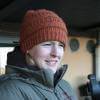



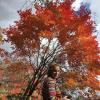














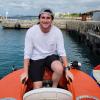


























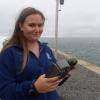





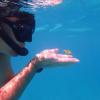

19 April 2024 6:46pm
Hello @CourtneyShuert
If I am not mistaken, Wildlife Computers was developing or has developed a remote release package for such an application as has a much smaller company, Desert Star Systems. I do not know where either company stands in terms of functionality, but I think for both cases the animal still has to carry some kind of an attachment plate that will eventually be shed off. In theory (purely theory) and assuming a product exists, you/they could consider adapting the material of the plate to something that is 'sustainable' and not plastic or similar.
(edit: I noticed Kyler linked the WC product above)